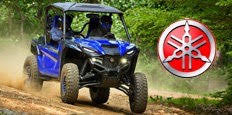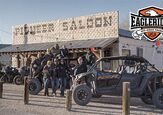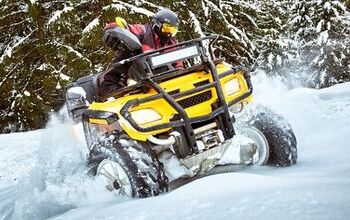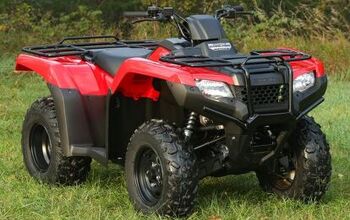Why Aren't My Rear Wheels Getting Power?
Why aren’t my rear wheels getting power? That is what one of our readers wants to know after he heard a bang while riding his Honda Foreman 500 and the trouble started.
This exactly what he asked the ATV AnswerMan, followed by his answer:
Hi there,
My name is Brandon and I have a 2005 Honda Foreman 500s. It has the lock in lock out 4WD with manual shift. Well, I was going up a slope in two wheel drive at the time and heard a bang and the bike stopped and I then put it back in gear and had no power at all to the rear wheels the bike just revved up. I then put it in 4-wheel drive and only the front wheels were working. Do you have any information on what went wrong I was hoping maybe a universal joint broke, any information would be greatly appreciated. Thank you for your time.
Hi Brandon,
First and foremost I want to thank you for the excellent description of what was going on just before the unfortunate breakage. I rarely get that detail or truth for that matter. So in getting to the question, here’s the skinny on how to figure out just what might have broken in the final driveline to the rear wheels.
The first thing I would do is to jack the Honda up in the rear and stabilize the machine so it does not fall on you or any unsuspecting onlookers in the shop. The rear driveline may be a touch difficult to see from the side, but you want the Foreman to be in gear and gently try spinning the rear wheels. It does not matter which side, as this solid axle machine will turn both. The Pinion shaft is a piece of steel comes out of the front of the rear differential that turns the ring gear in the rear differential. This could have broken internally and you will not be able to see it, but when spinning the rear wheels make sure the pinion shaft is turning. If it is then move on up the shaft towards the engine.
The next coupler, or what Honda refers to as the “Pinion Joint,” actually attaches to a splined propeller shaft coming out of the rear facing side of the engine through the swing arm. This can give way under heavy load if it is worn or has suffered abuse. You will want to check this next. Now I will tell you that the prop shaft connection to the pinion joint could be hidden inside the swing arm tube and out of sight, but this kind of break should be easily identifiable.
From here you need to check the yoke joint, which looks like a common steering knuckle joint. You are basically just chasing the problem to the source of power and it should be pretty clear when the Honda’s rear wheels are off the ground.
Good luck on this one. Unfortunately, you need to be ready to break out the wallet as this could get a little expensive.
Whether he is in Mexico covering the Baja 1000, building ATVs for local racers, or out enjoying the trails, Rick’s passion shows in his stories. Learning to wrench his own machines from his grandfather, Rick also has an undying appreciation for the mechanics of off-road vehicles. Do not let the dirt and mud fool you, though, as Rick also has a deep love for street cars.
More by Rick Sosebee











![Pedal Powered Side-by-Side [video]](https://cdn-fastly.atv.com/media/2022/10/24/8744132/pedal-powered-side-by-side-video.jpg?size=350x220)


![Don't Try This at Home: Muddy Crash [video]](https://cdn-fastly.atv.com/media/2022/10/24/8744120/don-t-try-this-at-home-muddy-crash-video.jpg?size=350x220)













